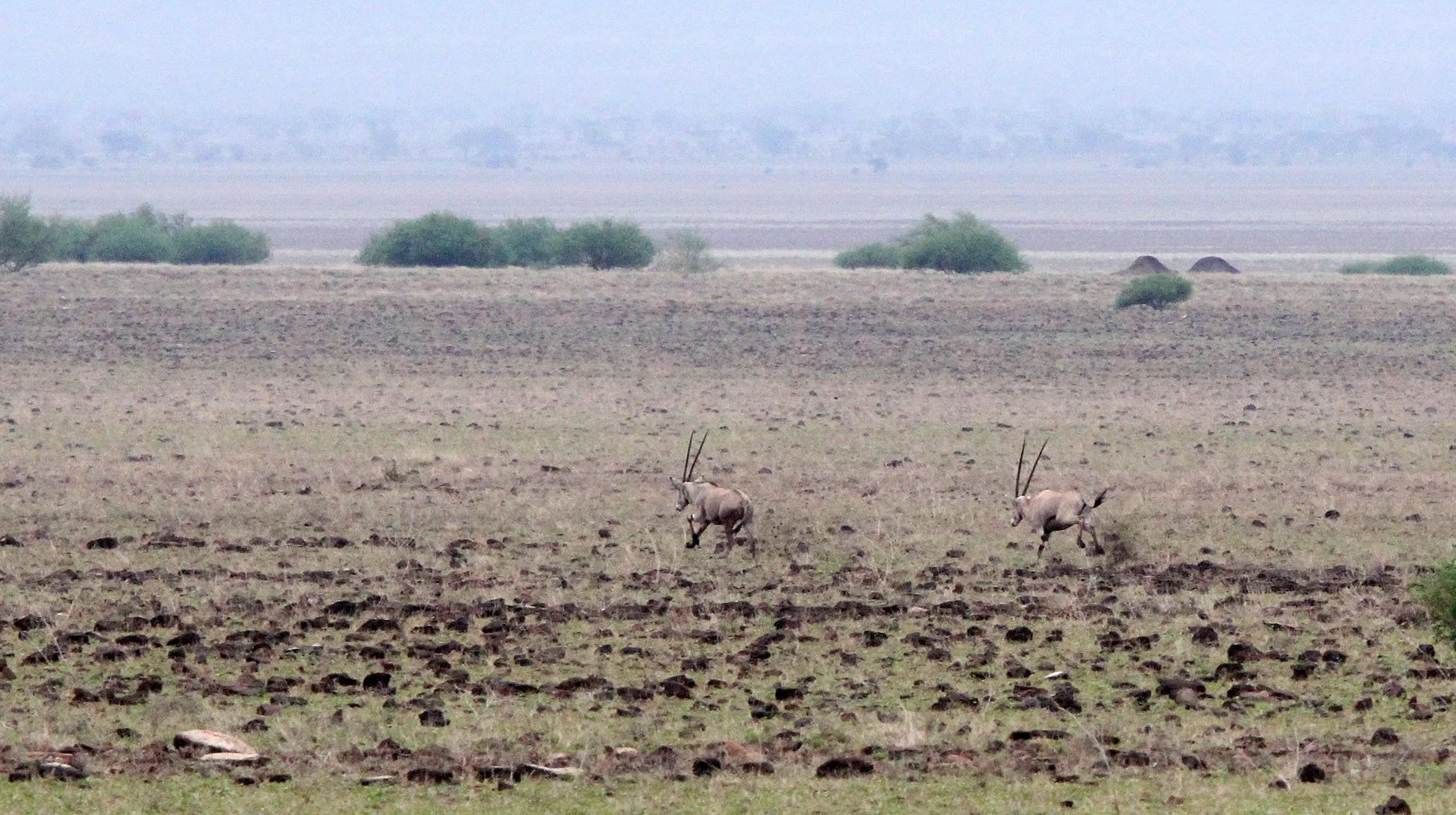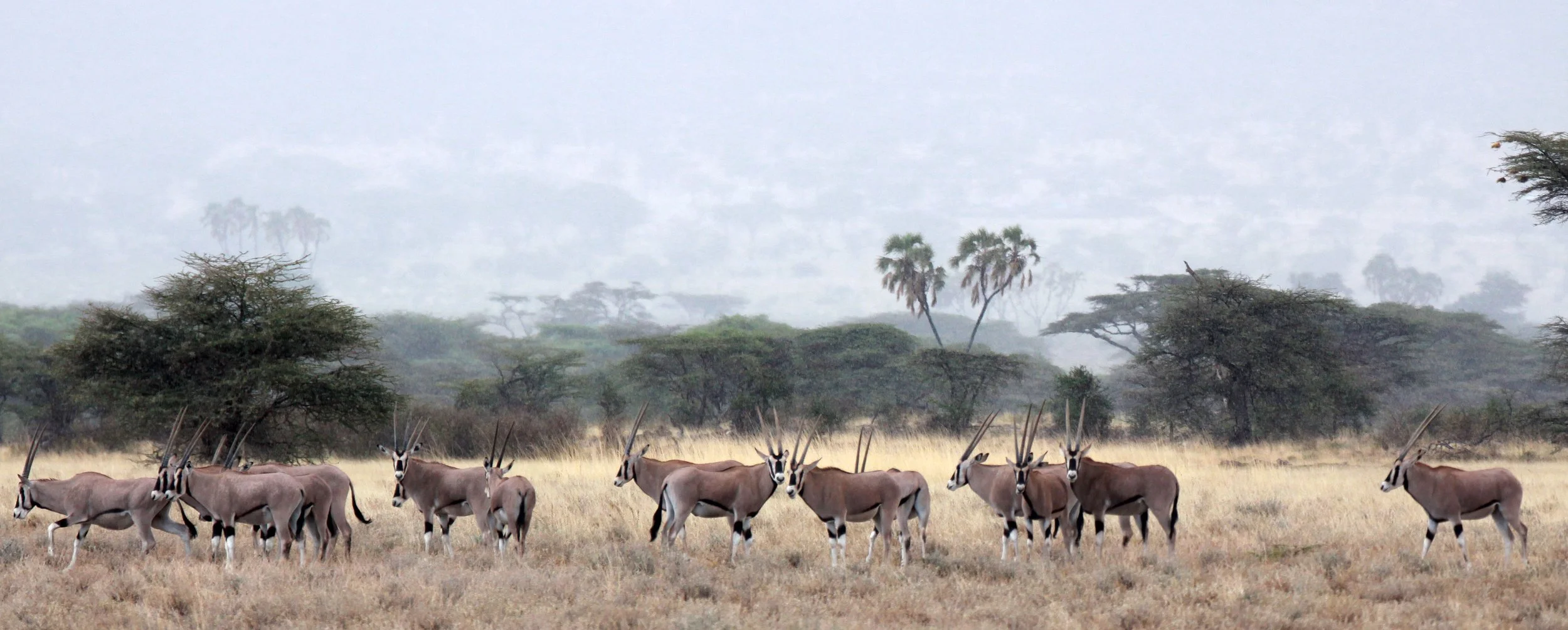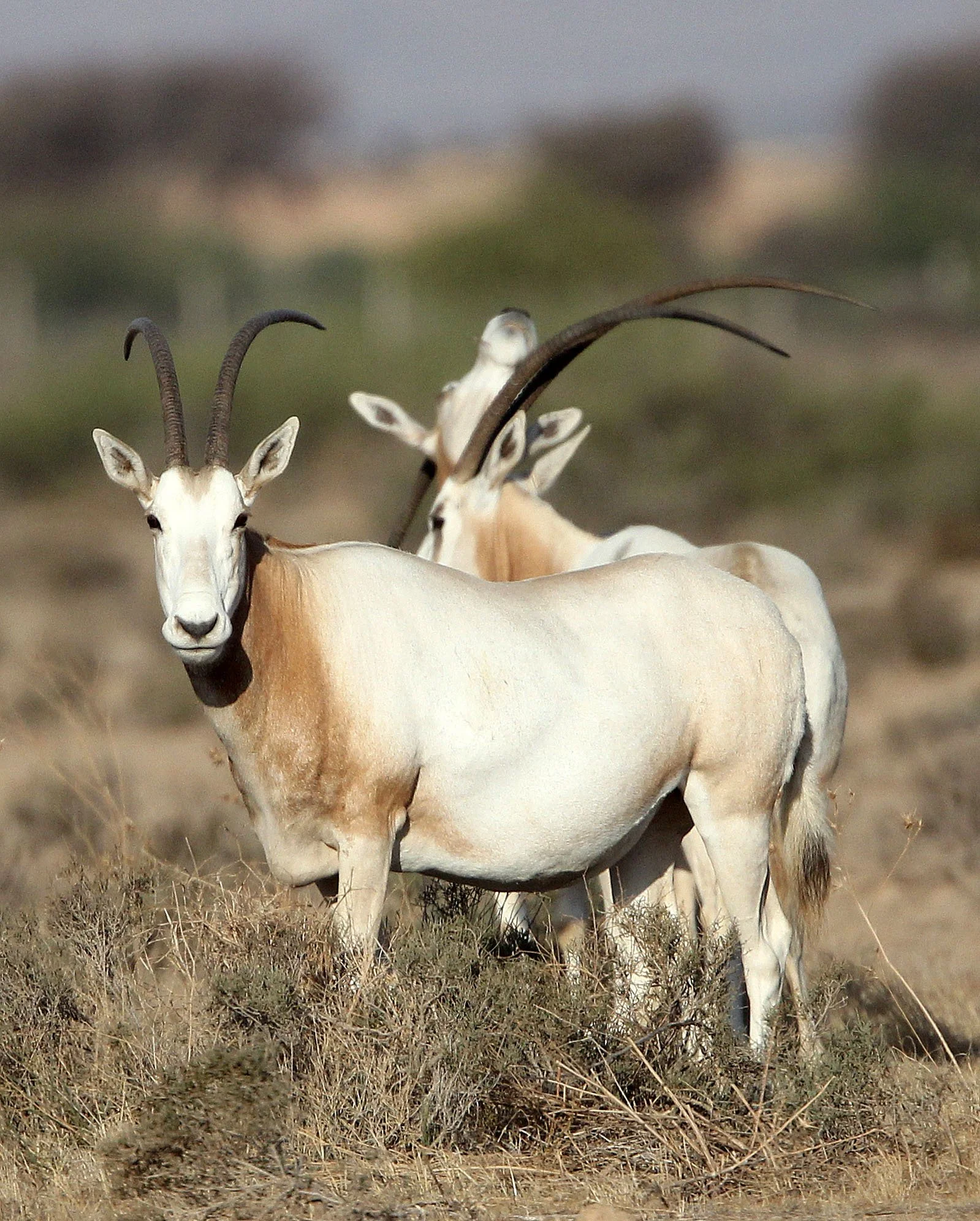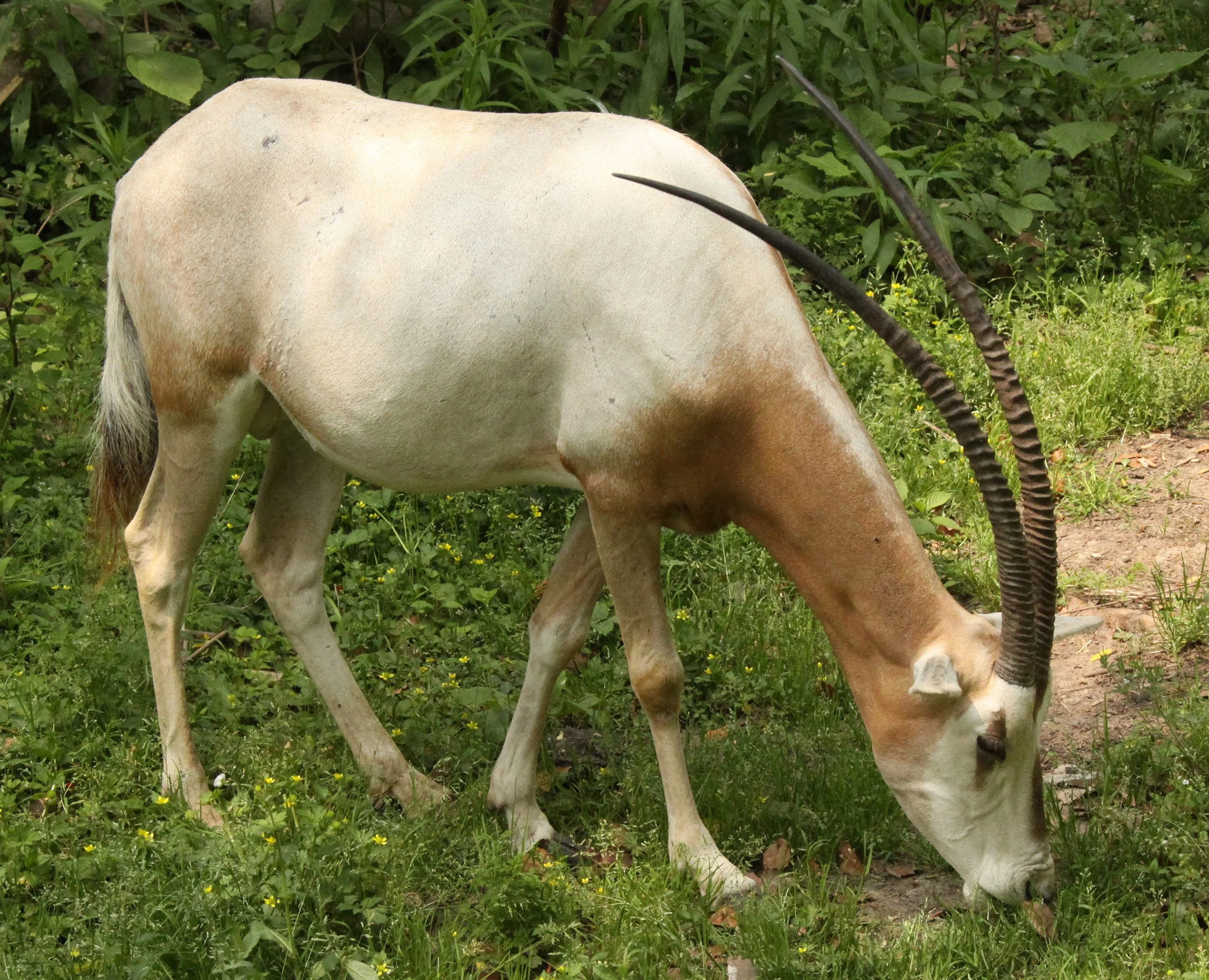
Oryx is a genus consisting of several large antelope species called oryxes. Their pelage is pale with contrasting dark markings in the face and on the legs, and their long horns are almost straight. The exception is the scimitar oryx, which lacks dark markings on the legs, only has faint dark markings on the head, has an ochre neck, and has horns that are clearly decurved.
The Arabian oryx was only saved from extinction through a captive-breeding program and reintroduction to the wild. The scimitar oryx, which is now listed as extinct in the wild, also relies on a captive-breeding program for its survival. The Arabian oryx (Oryx leucoryx, Arabic: المها), became extinct in the wild in 1972 in the Arabian Peninsula. It was reintroduced in 1982 in Oman, but poaching has reduced its numbers there. One of the largest populations of Arabian oryxes exists on Sir Bani Yas Island in the United Arab Emirates. Additional populations have been reintroduced in Qatar, Bahrain, Palestine, Jordan, and Saudi Arabia. As of 2011, the total wild population is over 1,000, and 6,000–7,000 are being held in captivity. In 2011, the IUCN downgraded its threat category from extinct in the wild to vulnerable, the first species to have changed back in this way.
The Scimitar Oryx, also called the scimitar-horned oryx (Oryx dammah), of North Africa, is now listed as possibly extinct in the wild. Unconfirmed surviving populations have been reported in central Niger and Chad, and a semiwild population currently inhabiting a fenced nature reserve in Tunisia is being expanded for reintroduction to the wild in that country. Several thousand are held in captivity around the world.Oryx is a genus consisting of four large antelope species called oryxes. Their pelage is pale with contrasting dark markings in the face and on the legs, and their long horns are almost straight. The exception is the scimitar oryx, which lacks dark markings on the legs, only has faint dark markings on the head, has an ochre neck, and has horns that are clearly decurved.
The Arabian Oryx was only saved from extinction through a captive-breeding program and reintroduction to the wild.[1] The scimitar oryx, which is now listed as extinct in the wild, also relies on a captive-breeding program for its survival.
The East African oryx (Oryx beisa) inhabits eastern Africa and the closely related gemsbok (Oryx gazella) inhabits southern Africa. The gemsbok is monotypic and the East African oryx has two subspecies; the common beisa oryx (O. b. beisa) and the fringe-eared oryx (O. b. callotis). In the past, both were considered subspecies of the gemsbok. The East African oryx is an endangered species, whereas the gemsbok is not.
The following species are featured on this page:
Fringe-eared Oryx (Oryx callotis)
Scimitar-horned Oryx (Oryx dammah)
Galla Oryx (Oryx gallarum)
Beisa Oryx (Oryx beisa)
Arabian oryx (Oryx leucoryx)
The Arabian oryx (Oryx leucoryx) or white oryx is a medium-sized antelope with a distinct shoulder bump, long, straight horns, and a tufted tail. It is a bovid, and the smallest member of the genus Oryx, native to desert and steppe areas of the Arabian Peninsula. The Arabian oryx was extinct in the wild by the early 1970s, but was saved in zoos and private reserves, and was reintroduced into the wild starting in 1980.
In 1986, the Arabian oryx was classified as endangered on the IUCN Red List, and in 2011, it was the first animal to revert to vulnerable status after previously being listed as extinct in the wild. It is listed in CITES Appendix I. In 2016, populations were estimated at 1,220 individuals in the wild, including 850 mature individuals, and 6,000–7,000 in captivity worldwide.
Arabian Oryx (Oryx leucoryx) - Shaumari Reserve Jordan














































































Beisa Oryx (Oryx beisa) - Awash Ethiopia




















Galla Oryx (Oryx gallarum) - Buffalo Springs Kenya



































































Scimitar-horned Oryx (Oryx dammah) - Bouhedma Tunisia





























































Fringe-eared Oryx (Oryx callotis) - Woodland Park Zoo Seattle Washington


